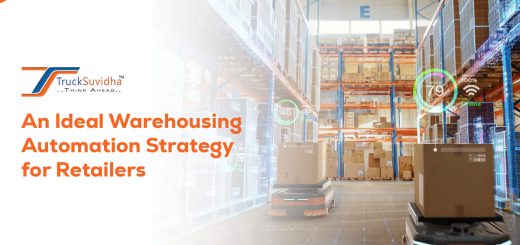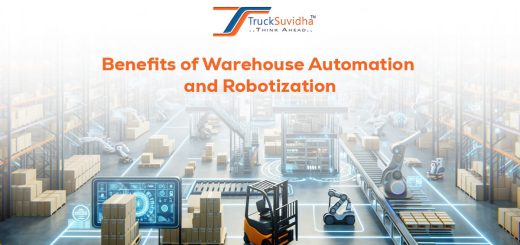How AI Helps Warehouses Handle Labour Shortage
One of the most significant challenges in the logistics industry is the quick turnover of workers in warehouses. While hiring rates continue to fall short of rising demand, firms must devise effective solutions. One such option is to apply artificial intelligence (AI) during warehouse operations. The demographic trends of an older population and lower birth rates imply that this situation can persist for a long period. To address such issues, warehouses should begin looking for other employment strategies, such as using AI systems to do and help with activities. Implementing AI technology in a warehouse would assist enhance operations and reduce the amount of labour shortage to complete tasks, even as the workforce shrinks. These business practices will be critical for organizations seeking to compete in the market while also coping with challenges relating to the present labour crisis.
Understanding the Labour Shortage in Warehouses
There are several reasons for the labour shortage in warehouses. These include an aging population, decreased birth rates, and changes in labour mobility patterns. The bulk of warehouse workers are pensionable, and no young people can easily take on such occupations. Furthermore, the nature of the warehouse job is dangerous since it involves working long hours and doing arduous and repetitive tasks, which may dissuade the majority of potential employees. As a result, the sector has a limited working population.
The consequences of this labour shortage include increased operating costs, order backlogs, and poor service performance. Under such conditions, organizations have no choice but to seek ways to improve their operational level to survive. Here’s where AI comes in.
Automating Tasks That Take Time
The most obvious advantage of AI in warehouses is automation. Many procedures are mostly physical, but knowledge-based tasks like data input, scheduling, and inventory planning still require a lot of time. AI may automate these time-consuming, repetitive tasks so that human workers have more time to focus on other tasks, allowing facilities to work more effectively even when personnel numbers are low.
AI may also examine sales data, picking data, and other process-related data to identify inefficiencies and propose solutions. Given that warehouse workers spend 80% of their time walking, it may be necessary for warehouses to move high-volume commodities to more convenient places or rearrange the shelves to improve navigation. AI can point out areas that need improvement so that productivity may increase without adding more employees.
Thanks to automation and optimization, organizations now have more time during the workday to do tasks that provide value. As a consequence, they can increase productivity at the same rate as if they hired additional workers without being dependent on the ebb and flow of the labor market.
Enhancing Recruitment and Training
By assisting businesses in strengthening their hiring and retention strategies, AI can also help alleviate the warehouse labour crisis. Conventional methods in this area frequently fall short, with just 6% of companies using staffing agencies to labour shortage despite 84% employing at least two of these services. AI offers a better course of action.
Generic AI algorithms can generate emails to potential workers and write more enticing and accurate job descriptions to increase applications. LinkedIn has already begun testing an AI that creates job descriptions. Also, it is used to connect people with appropriate positions. Similar AI may scan the web for experts who have the appropriate abilities for a job. Typical job searches may overlook, even individuals who aren’t actively looking for new employment. As a consequence, warehouses may expand their market to draw in more potential employees.
After a potential recruit applies, AI tools may prescreen their resumes to decide who may be the greatest fit for the organization. Some companies also utilize AI to detect early indications of burnout to intervene and avoid turnover. Similarly, automated solutions may automate tedious processes, making day-to-day tasks more interesting and thereby enhancing retention. AI can also automate most of the data input needed in hiring and onboarding. It allows new hires to get up and running more quickly.
Also Read:- 9 Key Benefits of Truck Dashboard Camera
Improving Employee Engagement
AI might potentially boost employee engagement in warehousing organizations. The same AI analytics that identifies where operations may be made more efficient can also identify potentially dangerous procedures. Management might then implement improvements to decrease workplace injuries, hence increasing morale.
AI in the warehouse automates tedious, repetitive jobs. Jobs like data input and invoicing, free up humans for more interesting duties like running machines or coordinating operations with others take less time. Employees may also have lower total workloads, which helps them feel less stressed. Rising demand may result in workloads, and stress for the staff if these changes are not made. Which will lead to reduced engagement and morale.
Improving staff engagement is a vital component in addressing warehouse labour shortage. Companies with highly engaged personnel had 43% lower turnover and 18% higher output than those with poor engagement.
Conclusion
AI integration in warehouses is essential to solving the labour shortage. Companies must use caution, though, as inappropriate deployment might result in problems like greater inequality and job displacement. Firms must implement AI with much thought and strategic strategy. Artificial intelligence (AI) has the potential to reduce job losses as it can help with labour shortages. Initiatives for reskilling and upskilling are essential to overcoming this obstacle.
AI and automation-enabled warehouses ought to provide professional development chances for staff members to acquire the skills they’ll need in an increasingly automated workplace. Organizations may safeguard the future relevance and value of their workforce by allocating resources toward training programs that concentrate on AI-related capabilities. This strategy helps people grow with evolving technology. Also, it will foster a culture of constant learning and flexibility, while simultaneously reducing the chance of job loss.




Recent Comments